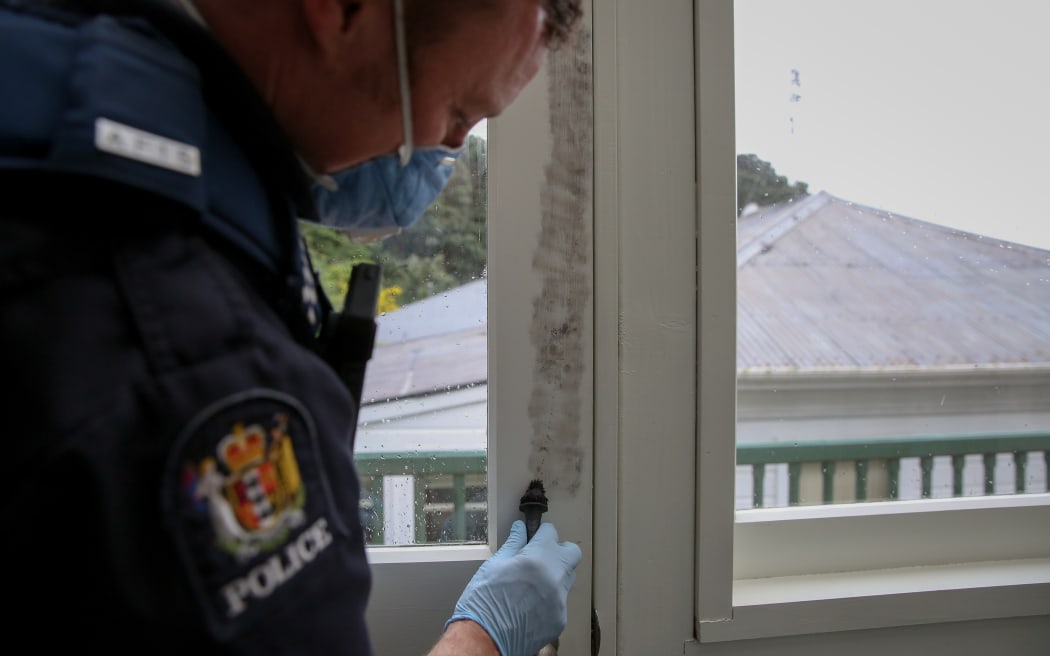
File picture. Police anticipate to seize 600,000 photographs a 12 months of prints left behind at crime scenes, and 50,000 at police stations from folks they arrest.
Photograph: RNZ / Alexander Robertson
Contemporary from being pressured to destroy hundreds of fingerprint data, police wish to enhance their know-how for scanning and storing scans of biometric identification information – distinctive options together with fingerprints, scars, tattoos and faces.
This features a plan for scores of ‘biometric recording units’ to be put out into the sphere for the primary time.
A young that closed on Friday requested know-how firms about capturing, transmitting and storing fingerprint scans from the sphere.
Police need to exchange the prevailing 50 scanners at police stations to “improve this functionality for biometric arrestee prints and supply numerous transportable livescan units for smaller stations/cellular workgroups/highway policing,” they mentioned in an announcement on Tuesday.
The tender shows they anticipate to seize 600,000 photographs a 12 months of prints left behind at crime scenes, and 50,000 at police stations from folks they arrest.
Some transportable scanners in the USA let officers on patrol scan prints and determine an individual inside a minute.
A query within the tender requested: “600k every year is extraordinarily giant (ie ~2000+ per day) Are you able to verify that is appropriate?” Police responded that it was.
It was “not an extension of present scope”, they informed RNZ.
Initially, police rejected RNZ’s questions on the grounds that “it is a business course of”, and so they took a number of days to make clear what they’re wanting on the higher fingerprinting tech to do.
They aren’t on the stage of selecting to purchase something.
The Workplace of the Privateness Commissioner (OPC) mentioned it was not conscious of the tender.
The police have additionally not consulted their exterior advisory panel on rising know-how. However the panel chair Professor Michael Macaulay mentioned they didn’t seek the advice of about every little thing, and total, “It is a very optimistic course of, they’ve listened to our recommendation each time.”
The OPC, after an inquiry, ordered police in late 2022 to destroy giant numbers of fingerprints, principally of Māori younger folks, but in addition of adults, unlawfully gathered for years and saved for much too lengthy. They’d additionally been storing hundreds and hundreds of unlawfully captured pictures on their smartphones.
The legislation permits police to fingerprint an individual detained in lawful custody for committing an offence. However with these youth, police up till 2022 would normally fingerprint an individual legally, after which do a second set.
“The second so-called voluntary set was unlawfully retained indefinitely,” the inquiry mentioned.
Police even had a particular “consent” kind for it, however the consent was not legitimate, the OPC mentioned.
Police had been pressured by the OPC to scrap the observe in 2022, in addition to the fingerprinting consent kind.
However they’d so many illegal prints each on paper and digitally saved, that they failed to fulfill final December’s deadline to delete all of them.
On Monday, they informed RNZ they’d “recognized and destroyed all Youth Voluntary Fingerprints”.
The OPC gave directives to enhance police’s unclear insurance policies and their lack of steerage round fingerprinting. Its latest update exhibits police had been in March nonetheless engaged on these, and on a digital disposal commonplace.
The Workplace of the Privateness Commissioner informed RNZ that “simply because an organisation is already utilizing a know-how or amassing data, it doesn’t imply they’ve a continued proper to make use of it with out additional checks”.
It had informed police to conform on fingerprinting, and “any new know-how ought to assist the operational protocols that police have for assortment, safety, retention and disposal practices, to make sure police are assembly the lawful objective”, it mentioned in an announcement on Monday.
It inspired them to be “open and clear”.
The police union has asserted that the privateness clampdown on voluntary fingerprints was “turning again the clock on stopping and fixing crime”.
‘Digital system’
Police have used digital fingerprinting since no less than 2008. Paperwork present they need fingerprints to be a part of a “absolutely built-in biometric image-to-image system”.
Biometrics are indelible private markers corresponding to prints, faces and irises.
The corporate that gives police with facial recognition know-how, Japanese major NEC, additionally at present supplies their fingerprinting know-how in 50 kiosks at 40 police stations. Whereas 21 ‘booze buses’ may also use laptops to scan prints and faces.
Finger and palm print information is fed into the police’s total data system, ABIS. Varied multimillion-dollar upgrades have been going down round it in recent times.
The tender “seems to switch the bodily system with a digital system”, with the power to hyperlink to a brand new software for photographs of scars, marks and tattoos (SMTs). An earlier contract mentioned they anticipated so as to add 30,000 SMT photographs a 12 months.
Any new system should have the ability to import an present 2.5 million fingerprint data from “900,000 private dossiers”, and share information with Interpol. It ought to have the ability to scan footprints, and embody a custody pictures seize system.
The info within the system would doubtless be at a “restricted” degree and New Zealand “is strongly most well-liked” for storing the prints, with Australia as a backup “if New Zealand shouldn’t be potential”.
The OPC put out a draft code final month that proposes more stringent rules on processing biometric information.
The police are testing the marketplace for new fingerprint know-how on the identical time that the replacement of the outdated 111-call system has been put on ice; and a mass overhaul of the police’s core, however outdated, intelligence-gathering and evaluation know-how has been delayed.


